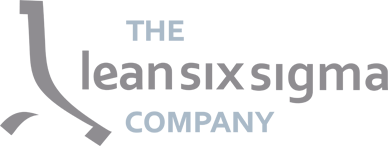In 1990 James Womack and Daniel Jones went on a world tour to promote their book: “The Machine That changed the world“. During their tour, they gave seminars on the efficient way of production realized by the Toyota Company. James Womack and Daniel Jones named this way of working: Lean Production.
The theory behind this has been later described by Womack and Jones in their book: Lean Thinking
In practice, these Lean Thinking methodologies and tools are often captured in different terminologies such as Lean Management, Lean Manufacturing, and Lean Enterprise. As The Lean Six Sigma Company, we believe the term Lean Management best describes the wide array of Lean methods and tools.
Lean Management vs. Muda.
Lean Management is a methodology to ensure value adding activities run smooth and quickly through the process. Process speed or the efficient flow of a process is the essence of Lean Management. Anything which impedes this speed is called Muda. Muda is the Japanese word for waste and describes all nonvalue-adding activities within a process.
In short: Lean Management is the method which creates an efficient process flow by eliminating nonvalue-adding activities (muda).
The 7 types of waste
There are 7 types of nonvalue-adding activities recognized in the Lean Management theory:
- Transportation
- Stock
- Motion
- Wait
- Processing (too difficult)
- Overproduction (too much or too soon)
- Defects
A process without waste is rare. Therefore organizations, which work according to the Lean Management methodology, focus on reducing waste to a pre-defined and achievable optimum.
The 5 steps of Womack
The Lean Management methodology contains a 5-step model to eliminate waste and optimize business processes.
Step 1: Identify value
Step 2: Create a Value Stream Map
Step 3: Create Flow
Step 4: Create Pull
Step 5: Strive for perfection
Each step consists of a set of practical techniques to achieve the next objective. During the courses, you will learn which techniques there are and how to apply them.
Lean in the service industry
The 7 wastes seem more applicable to the manufacturing industry because the types of waste seem more tangible than in service organizations. Stock can be quantified in a warehouse and waiting time can be measured when the production line is stopped. Within the service, industry waste may seem less apparent but is certainly not less present.
Studies show that 30 to 80% of operational costs can be attributed to waste. The stack of pending quotations, invoices and authorisations can be seen as the type of waste we called ‘Stock’. People in a queue can be seen as an example of ‘Wait’. Invoices followed by credit invoices are perfect examples of ‘Defects’.
In short: The Lean Management methodology can significant value to companies in the service industry. During the courses, we will pay specific attention to the practical application of Lean Management within the services industry.
Lean Management courses: Lean Thinking and Lean Practitioner
The courses are a combination of a practical simulation and the Lean Management theory. Based on the 5 steps of Womack a simulated process must be optimized by the delegates. By applying the theory in practice, the delegate will experience the power of Lean Management.
Was this article helpful?
